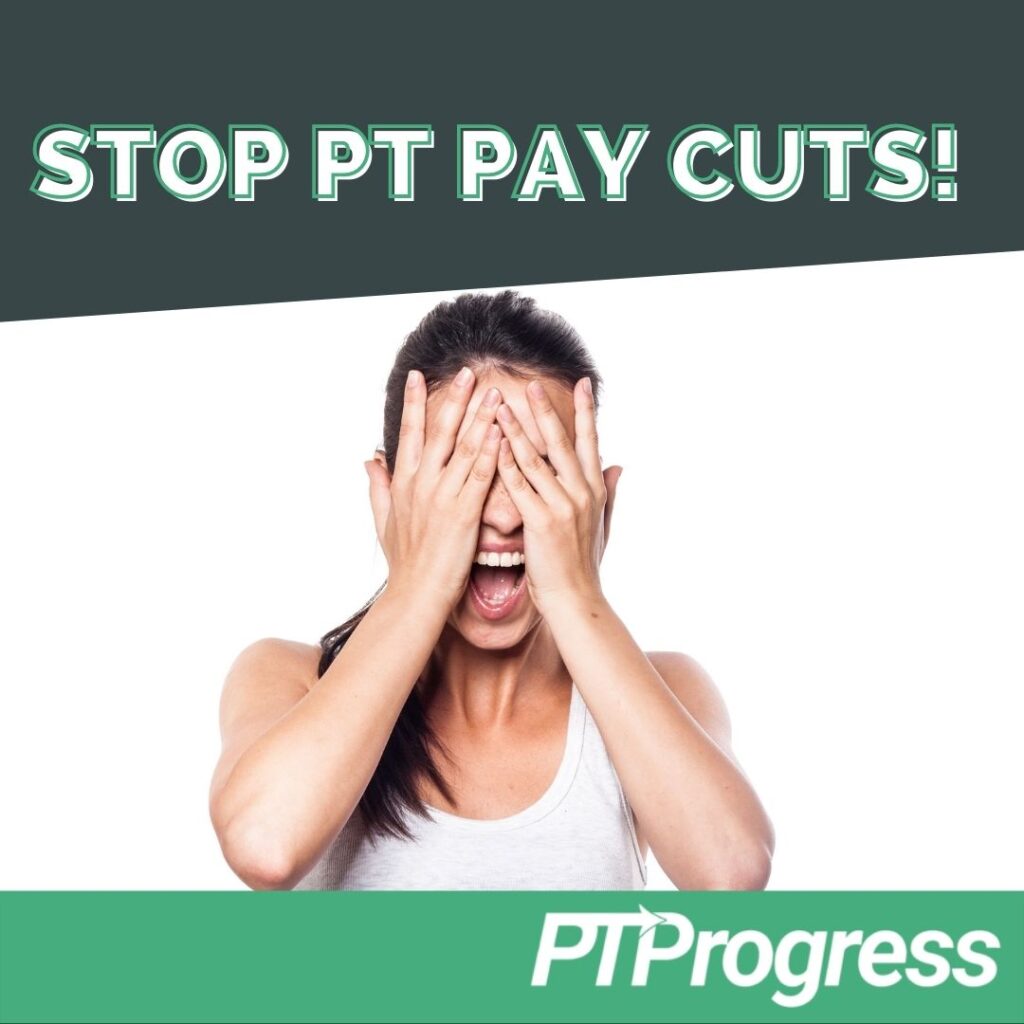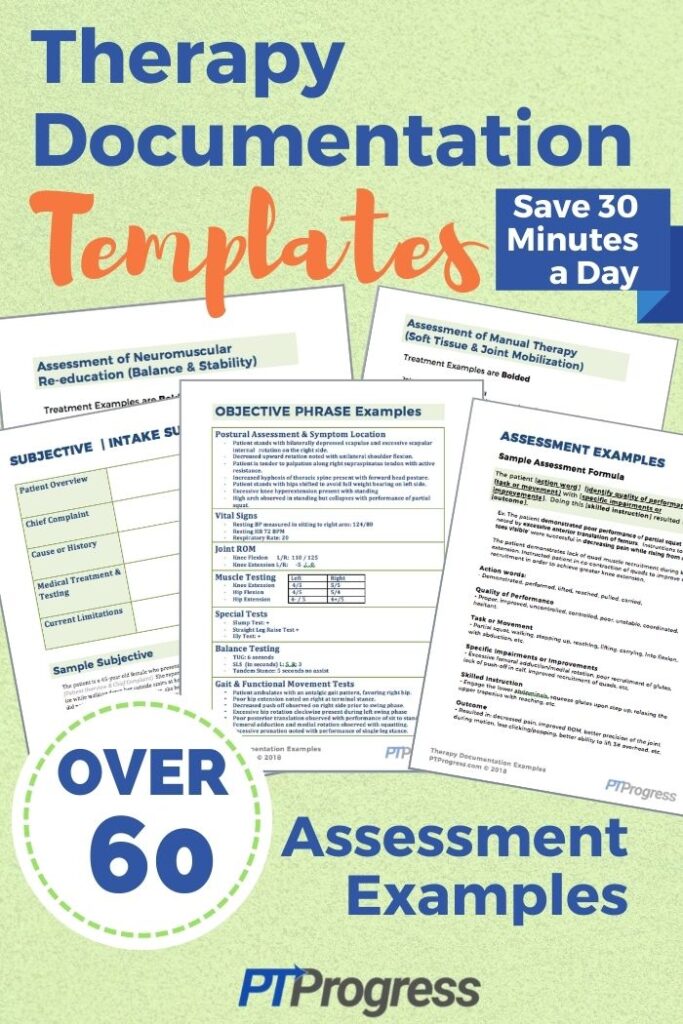
As a Physical Therapist, there’s one thing that really frustrates me about the physical therapy profession. I don’t mean to rant, but something needs to be said.
I know I could be preaching to the choir. You may be another PT, a student or an educator, but maybe you’re in management. If so, I hope you keep reading – I have some ideas later in this article that can help improve your business.
My Issue with Clinic Management: PT Pay Cuts
Why is it that, whenever revenue is down or an insurance company proposes a reimbursement cut, the first thing a clinic manager looks at, the first action item they “inspect,” is productivity?
Here’s what I mean:
“Hmmm, revenue is down, it must be because our therapists aren’t producing enough per hour. That’s really affecting our bottom line.”
The conclusion usually goes something like this:
“To save money we should probably do one of two things: cut their hours or increase the productivity requirement, especially with those proposed reimbursement cuts coming.”
Sound far-fetched?
Or does it sound familiar?
This problem happens all over the country, and I even saw it firsthand in a clinic last week. Too often, management is quick to blame low revenue on PTs, and the resulting pay cuts can lead to physical therapist burnout.
Interpreting Data Fairly
First of all, I’m not complaining that PTs are merely overworked, and I don’t condone laziness among therapists. Rather, I think the main issue lies in how the data is interpreted.
If you manage a clinic, are you interpreting the data fairly? And what’s your plan if (or when) insurance companies propose reimbursement cuts?
Clinics nationwide are feeling profit margins slim, so it’s a good idea to try to work as lean as possible. But that’s nothing new; we PTs have long been trying to meet high productivity standards.
For years, PTs have been scrutinized over how many billable units they eke out per hour. And when revenue is down, unfortunately, the blame usually falls on the physical therapist even though other critical factors are blatantly ignored.
Clinic managers, listen up: consistently blaming your PTs for low profit is a surefire way to burn them out. It’s time clinic managers start looking at the things they can control instead of blaming PTs for what they can’t.
Reasons for Low Revenue
There are plenty of reasons why productivity is low in a clinic, besides lazy therapists. Maybe patient volume is down, or too many appointments get canceled.
Perhaps the clinic itself is poorly run, and a lack of staff is causing bottlenecks in patient flow. Unless the clinic is properly staffed, the PTs end up having to wear the hat of the scheduler, therapist, and tech for each patient, all the while trying to bill as many units as possible to “meet their numbers.”
And I get it, PTs need to produce revenue; this is not a volunteer organization. But tightening productivity restrictions and doubling up the patients each hour probably won’t lead to a better-run facility, happier clinicians, or more satisfied patients.
5 Better Ways to Boost Revenue Besides PT Pay Cuts
Instead of defaulting to these half-baked ideas, clinics should make changes that reflect better business practice. It might take some creativity or a learning curve, but I believe the bottom line will be worth it.
More Marketing
Every PT clinic is essentially a business, and every business needs to advertise. So if you’re running this business, my question to you is this: Are you marketing enough?
If productivity is low, perhaps your ads aren’t reaching enough people. Are you running ads on social media or Google to make sure you have a steady flow of incoming patients?
Marketing practices may seem intimidating but they’re fairly easy to learn. If your clinic has office managers – employees who produce 0 billable units! – maybe they should run Facebook ads or Google Ads.
And excuse me, but I think it’s possible the Director of Rehabilitation for your hospital or therapy group could run one less report and learn how Facebook ads work. If $100 a day is “too much” to spend on ads, then why spend $300-400 a day on a director of rehab whose best ideas are to simply increase productivity or implement PT pay cuts?
Savvy Scheduling
Once you have a steady flow of patients, those numbers need to be managed well. The best way to boost productivity is to run an efficient schedule.
Did you realize that a 40-minute one-on-one schedule achieves 12.5% more billable units than 30-minute or 60-minute schedules? Thanks to the 8-minute rule (every 8- to 15-minutes of time equals one unit), a 40-minute treatment reimburses at 3 units. That means in 2 hours, you could schedule 3 appointments and reimburse 9 units instead of 8.
Scheduling only half-hour or hour sessions means you’re leaving billable units on the table, as demonstrated below:
| Appointment: | 30 minutes | 40 minutes | 60 minutes |
| Billable units: | 2 | 3 | 4 |
| Units per hour: | 4 | 4.5 | 4 |
What would your clinic look like with a 12.5% increase in revenue? All you have to do is change the scheduling to make it happen.
Documentation Efficiency
Next, how’s the documentation situation at your clinic? Are you encouraging or supporting the correct use of CPT codes? Managers can help therapists economize their documentation time by providing resources they need to write better.
I learned how to increase my average revenue per billable unit by using documentation templates. These templates were like professional cheat sheets, helping me churn out better documentation that actually reflected the skilled treatment I was providing in the clinic. Best of all, the templates cut my documentation time by an hour a day – great news for the bottom line, right?
If you’re a PT, I encourage you to compile your own documentation templates: collections of phrases you use consistently in the clinic to document standard treatments. I made my templates over a period of months, but if you’re not big on writing or don’t have the time to make your own list, use mine. You can check out the exact bundle of documentation templates I use here.
Appointment Retention
Clinic managers, do you have a messaging system that weekly reminds patients of their appointments?
It’s a lot easier to keep a patient than get a new evaluation through the door. You can reduce the cancellation rate by implementing regular reminder calls and texts – even automatically.
Support Staff
This one’s critical: is there support staff available for matters of scheduling and prepping? If not, you’ll have to accept one less unit of productivity every few hours.
Support staff play an integral role in a clinic’s success. These employees can unburden therapists by running the schedule and prepping rooms, which helps keep traffic flowing and productivity high. Otherwise, the PT is stretched too thin, having to manage all the different tasks in the clinic.
The Bottom Line on the Bottom Line: Stop PT Pay Cuts!
Look, there’s no magic wand to wave that will prevent clinician burnout. And if you’re a burnt-out PT who is weary of the inane productivity comparison contest, then I hope you can inspire change. Make some of these recommendations to your clinic manager. You don’t have to settle for feeling like a commodity or a billable-units machine.
And if you’re in charge of the clinic, please, try coming up with some new solutions to the age-old revenue problem. Implement new advertising, scheduling, and retention systems. Learn to track metrics that will actually grow the bottom line, and don’t just pass the blame onto PTs because they’re not “productive enough.”
Let me know what you think in the comments below. Be sure to share this post so that more PT clinics can be inspired to change their approach and treat each PT as more than a dollar sign.


